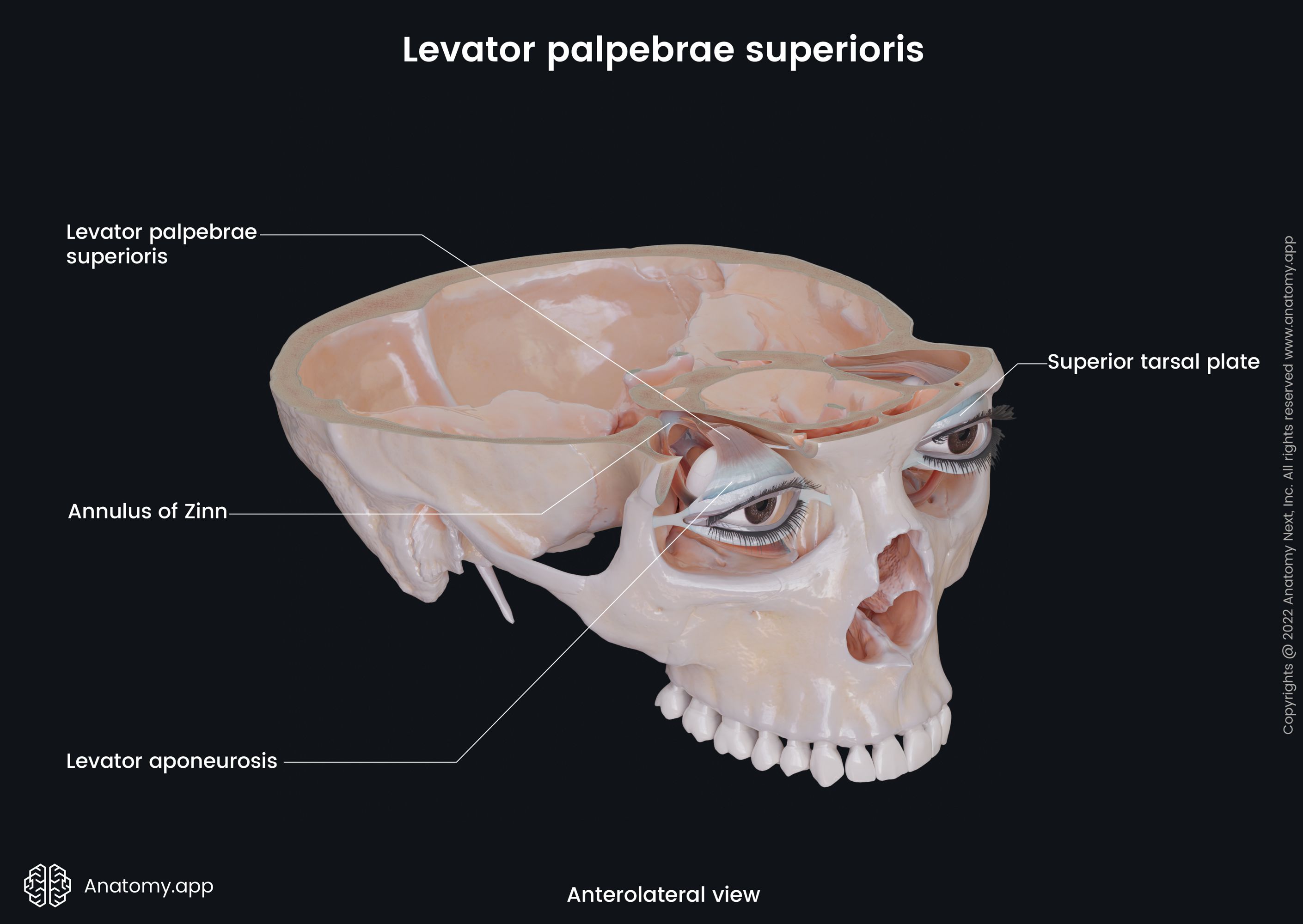- Anatomical terminology
- Skeletal system
- Joints
- Muscles
- Head muscles
- Neck muscles
- Muscles of upper limb
- Thoracic muscles
- Muscles of back
- Muscles of lower limb
- Heart
- Blood vessels
- Lymphatic system
- Nervous system
- Respiratory system
- Digestive system
- Urinary system
- Female reproductive system
- Male reproductive system
- Endocrine glands
-
Eye
- Accessory structures of eye
- Ear
Levator palpebrae superioris
The levator palpebrae superioris (Latin: musculus levator palpebrae superioris), also called the eyelid muscle, is an extraocular muscle that lies within the orbit and elevates the upper eyelid.
Origin
The fibers of the levator palpebrae superioris originate from the inferior aspect of the lesser wing of the sphenoid bone, above and in front of the optic canal.
Insertion
The levator palpebrae superioris inserts into the tarsal plate of the upper eyelid.

Action
The main action provided by the levator palpebrae superioris is elevating the upper eyelid. A ligament connects the levator palpebrae superioris to the superior rectus, thus the upper eyelid elevates also when the gaze is directed upwards.
The levator palpebrae superioris is responsible for opening the eyes by lifting the upper eyelid and, upon relaxation, allows eyelid closure due to gravity.
Innervation
The levator palpebrae superioris is innervated by a branch of the superior division of the oculomotor nerve (CN III).
Blood supply
The arterial blood supply of the levator palpebrae superioris is provided by the ophthalmic artery.